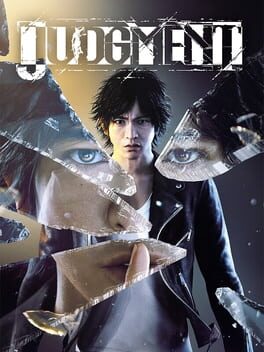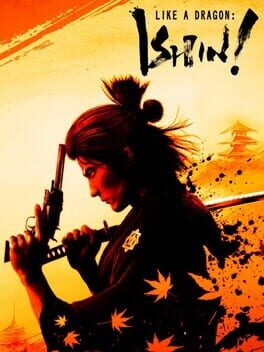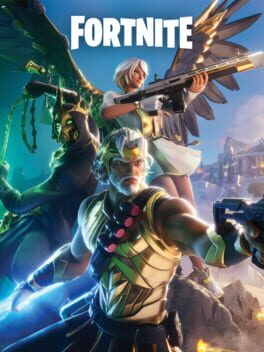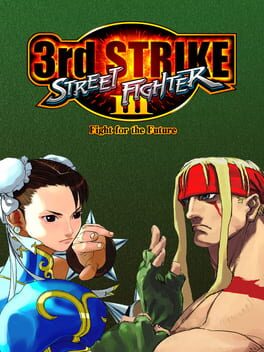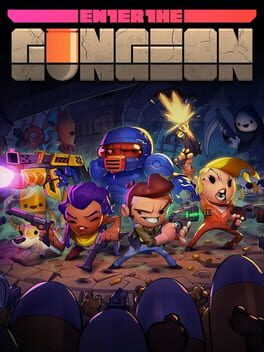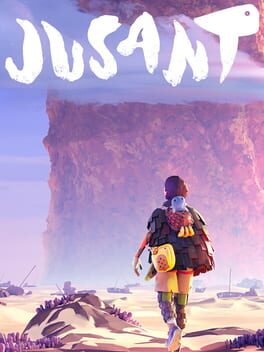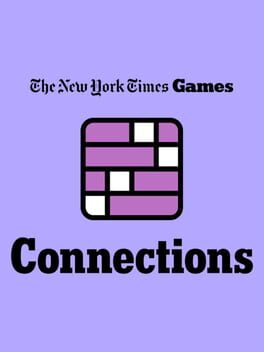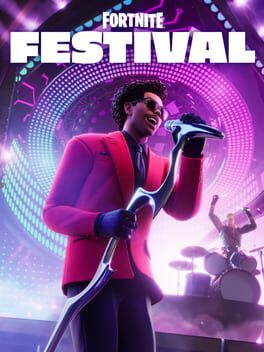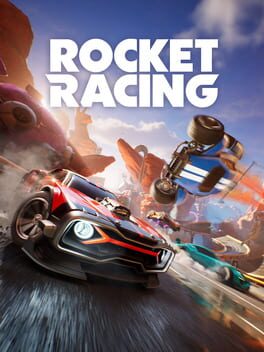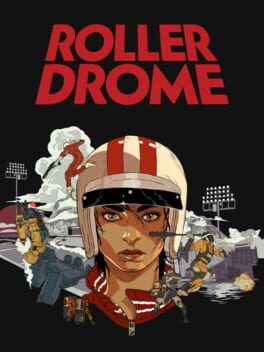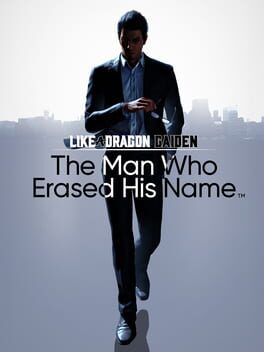VeryRealFiamma
1998
[6/13/24]
Started playing this on my birthday. Go me!
Disc 1 and the initial prowl around Shadow Moses Island is some really good shit, and I can't believe they got this shit down in 1998. Footprints, certain surfaces creating noise when walking, human shields, and really creative boss fights that focus on one or two of the things you pick up during the game. I didn't mind the late '90s-isms of the game. The forced action sequences sucked though, in the same way Hitman: Codename 47's forced action sequences sucked; the two weren't made to be guns blazing action games and so moving and shooting on a whim wasn't the main focus. The game starts to stagnate around Disc 2 and it's home to the shittiest escape sequence I've ever played because Snake fliches for 3 seconds every time he gets hit.
Being set in 1998 and after the fall of the U.S.S.R. the constant threat of nuclear war still rings true 26 years later. Wasn't born until '03, so I can't really corroborate if whatever was left of the Soviet Union were referred to as "terrorists", wouldn't be surprised if they were, but the events that happened 3 years after this game came out present a strong case for Kojima being a prophet. Alongside the main message of how nuclear bombs harm everyone who isn't at the very tippy-top of the food chain, there's also talk of trying to find one's own purpose in life amid being commanded all the time and genes being passed down to preserve a way of life. All concepts that I'm sure will have much more relevance in what I've heard is one of the biggest mindfucks in gaming ever.
Started playing this on my birthday. Go me!
Disc 1 and the initial prowl around Shadow Moses Island is some really good shit, and I can't believe they got this shit down in 1998. Footprints, certain surfaces creating noise when walking, human shields, and really creative boss fights that focus on one or two of the things you pick up during the game. I didn't mind the late '90s-isms of the game. The forced action sequences sucked though, in the same way Hitman: Codename 47's forced action sequences sucked; the two weren't made to be guns blazing action games and so moving and shooting on a whim wasn't the main focus. The game starts to stagnate around Disc 2 and it's home to the shittiest escape sequence I've ever played because Snake fliches for 3 seconds every time he gets hit.
Being set in 1998 and after the fall of the U.S.S.R. the constant threat of nuclear war still rings true 26 years later. Wasn't born until '03, so I can't really corroborate if whatever was left of the Soviet Union were referred to as "terrorists", wouldn't be surprised if they were, but the events that happened 3 years after this game came out present a strong case for Kojima being a prophet. Alongside the main message of how nuclear bombs harm everyone who isn't at the very tippy-top of the food chain, there's also talk of trying to find one's own purpose in life amid being commanded all the time and genes being passed down to preserve a way of life. All concepts that I'm sure will have much more relevance in what I've heard is one of the biggest mindfucks in gaming ever.
2021
[6/9/24]
After Kiryu's departure, returning to Kamurocho with a new crew, story, and avenue of the place to make sure this visit doesn't feel stale paid off. It's like Yakuza 4 showing us new sides of the city, only it actually goes further than "Hey, these people make a living this way here, you know."
Takayuki Yagami's background as a former lawyer, now a detective with parkour and fighting skills, gives this game a unique flavor among all the games in this world. Yagami's legal experience translates into scouring the environment, picking locks, presenting evidence, and tailing others. The last one runs its course pretty quickly, though. For the first time since like Tanimura, you're the one actually doing the unraveling of this mystery with your own expertise.
As for combat, Yagami's got two styles. Crane style is the faster one designed for crowd control, and Tiger is the better one. Even though these styles were designed with Dragon Engine in mind, it's still pretty early in it, so there's still some kinks that need to be worked out.
Legal drama isn't typically a topic I'm used to, but Judgement mixing this with typical Yakuza shenanigans drew me in and kept me in until the end. That last act, true to all entries, goes batshit insane. Can't wait to get to Lost Judgment. But I'll take a break before that.
After Kiryu's departure, returning to Kamurocho with a new crew, story, and avenue of the place to make sure this visit doesn't feel stale paid off. It's like Yakuza 4 showing us new sides of the city, only it actually goes further than "Hey, these people make a living this way here, you know."
Takayuki Yagami's background as a former lawyer, now a detective with parkour and fighting skills, gives this game a unique flavor among all the games in this world. Yagami's legal experience translates into scouring the environment, picking locks, presenting evidence, and tailing others. The last one runs its course pretty quickly, though. For the first time since like Tanimura, you're the one actually doing the unraveling of this mystery with your own expertise.
As for combat, Yagami's got two styles. Crane style is the faster one designed for crowd control, and Tiger is the better one. Even though these styles were designed with Dragon Engine in mind, it's still pretty early in it, so there's still some kinks that need to be worked out.
Legal drama isn't typically a topic I'm used to, but Judgement mixing this with typical Yakuza shenanigans drew me in and kept me in until the end. That last act, true to all entries, goes batshit insane. Can't wait to get to Lost Judgment. But I'll take a break before that.
[5/28/24]
A historical piece with Yakuza characters, not to be confused with a period piece with Yakuza characters. I'm a big fan of the samurai flick tropes on display here.
Funny as it is to say, I think this is one of the better stories in the series. Helps when you have literal history as the original author. Seeing which characters were set to be portrayed with the likeness of past Yakuza characters leads to dynamics between them and our Kiryu lookalike that I wish so desperately came to be in the mainline entries.
Being based on 19th century Japan, the combat is primarily sword-based, although you get the Dragon of Dojima style and a gun to mix things up. Not really much you can be creative with here when you get all your styles really early in, one of them just using both the sword and gun. The upgrade system is one of my favorites, though. Get grey orbs on leveling up and put them in one of four skill trees, but level up any style and you get a colored one you can swap the grey one out for. You could either continue committing to a style or evenly distribute skills as you go, so the progression feels as open as Yakuza 0.
Some parts of the game feel like they were taken from the RPGs. They don't mix that well. I tolerate the trooper system and the odd magic angle they take in some boss fights, but the whole time I felt like it belongs in another game where it would fit way better. It has its own progression system and leads to having to make builds for each fighting style. I'd like it more if it was one larger, universal set of troopers split between active and passive abilities; they have abilities not seen in the skill trees, so it wouldn't be redundant. Weapons and defensive gear can be given buffs that increase a stat by a percentage value, too. This game even has damage numbers for some reason. I heard this aspect of the game, or at least the troopers, didn't exist in the original version, so I'm more confused than anything.
At the end of the day, my biggest takeaway is that identity theft was rampant in Japan, you gotta be patriotic as shit, Mine would have been such a bro, and that I have a thing for samurai. I'll get to SamSho and the rest of Kurosawa's filmography one day...
A historical piece with Yakuza characters, not to be confused with a period piece with Yakuza characters. I'm a big fan of the samurai flick tropes on display here.
Funny as it is to say, I think this is one of the better stories in the series. Helps when you have literal history as the original author. Seeing which characters were set to be portrayed with the likeness of past Yakuza characters leads to dynamics between them and our Kiryu lookalike that I wish so desperately came to be in the mainline entries.
Being based on 19th century Japan, the combat is primarily sword-based, although you get the Dragon of Dojima style and a gun to mix things up. Not really much you can be creative with here when you get all your styles really early in, one of them just using both the sword and gun. The upgrade system is one of my favorites, though. Get grey orbs on leveling up and put them in one of four skill trees, but level up any style and you get a colored one you can swap the grey one out for. You could either continue committing to a style or evenly distribute skills as you go, so the progression feels as open as Yakuza 0.
Some parts of the game feel like they were taken from the RPGs. They don't mix that well. I tolerate the trooper system and the odd magic angle they take in some boss fights, but the whole time I felt like it belongs in another game where it would fit way better. It has its own progression system and leads to having to make builds for each fighting style. I'd like it more if it was one larger, universal set of troopers split between active and passive abilities; they have abilities not seen in the skill trees, so it wouldn't be redundant. Weapons and defensive gear can be given buffs that increase a stat by a percentage value, too. This game even has damage numbers for some reason. I heard this aspect of the game, or at least the troopers, didn't exist in the original version, so I'm more confused than anything.
At the end of the day, my biggest takeaway is that identity theft was rampant in Japan, you gotta be patriotic as shit, Mine would have been such a bro, and that I have a thing for samurai. I'll get to SamSho and the rest of Kurosawa's filmography one day...
[5/12/24]
Happy 25th, 3rd Strike.
It only took 5 years since the last Street Fighter II revision for there to finally be a worthy successor to the name. The first version of Street Fighter III, New Generation, was incredibly jank and felt off at all times. The second version, Second Impact, had some changes, but the game still failed to live up to the name. The two versions are incredibly underdocumented, and it's because this one here blows them out of the water. For one, we get returning veteran Chun-Li (who happens to be one of the best characters in the game) alongside four other new characters: Makoto, Remy, Twelve and Q. SFIII's definitely got the most unique roster to this day and it's so sad that most of these guys haven't seen the light of day since '99.
In terms of balance changes, the parry sees itself finally being useful! In New Generation and Second Impact, the parry was designed as another defensive option, which makes it SUCK because you tap forward instead of back to block. A little bit of frame data adjustments in 3rd Strike and it's now a tool used for offense with the ability to whip out an attack much faster than if you were to block it. The rest is history.
Aesthetically, it's the other side of the 90s coin that Street Fighter Alpha 3 and the previous two versions of Street Fighter III showed off. The "street" in Street Fighter is at its most apparent here, even after Street Fighter 6 thanks to the drum & bass soundtrack and grittier stages (we can thank memory limitations for the latter).
I love this game. It's a sign of devs trying their best to salvage a terrible game, shunned at first because it was a follow-up to that, and then it took the most iconic moment in competitive gaming history for people to look at it and go "wait, this is actually fire." It's cemented itself as one of the all-time greats and it deserves every bit of that title.
Happy 25th, 3rd Strike.
It only took 5 years since the last Street Fighter II revision for there to finally be a worthy successor to the name. The first version of Street Fighter III, New Generation, was incredibly jank and felt off at all times. The second version, Second Impact, had some changes, but the game still failed to live up to the name. The two versions are incredibly underdocumented, and it's because this one here blows them out of the water. For one, we get returning veteran Chun-Li (who happens to be one of the best characters in the game) alongside four other new characters: Makoto, Remy, Twelve and Q. SFIII's definitely got the most unique roster to this day and it's so sad that most of these guys haven't seen the light of day since '99.
In terms of balance changes, the parry sees itself finally being useful! In New Generation and Second Impact, the parry was designed as another defensive option, which makes it SUCK because you tap forward instead of back to block. A little bit of frame data adjustments in 3rd Strike and it's now a tool used for offense with the ability to whip out an attack much faster than if you were to block it. The rest is history.
Aesthetically, it's the other side of the 90s coin that Street Fighter Alpha 3 and the previous two versions of Street Fighter III showed off. The "street" in Street Fighter is at its most apparent here, even after Street Fighter 6 thanks to the drum & bass soundtrack and grittier stages (we can thank memory limitations for the latter).
I love this game. It's a sign of devs trying their best to salvage a terrible game, shunned at first because it was a follow-up to that, and then it took the most iconic moment in competitive gaming history for people to look at it and go "wait, this is actually fire." It's cemented itself as one of the all-time greats and it deserves every bit of that title.
2016
[4/25/24]
I started playing this game on the 9th of January, 2020. It was the second ever roguelike I played. Cut to today, and I've finally killed the final past I needed to kill. Fuck you, legally distinct Sarah Connor.
As the most Pro-Second Amendment game of all time, the game does the most to drill the fact that the game's themed around anything with gunpowder in it into your skull. The Dungeon is the Gungeon. The in-game compendium is called the Ammonomicon. The enemies are themed after guns, you got normal bullets, shotgun shells, sniper bullets, walking grenades and all have names relating to guns. The screen clear is a blank. Cursed enemies are "Jammed". You get cursed for having melee-related items. This is another one of those "reference absolutely everything" indies games (referencing D&D the most) often, so if the novelty of everything being a gun starts to wear off, you'll have all of the references and jokes to fall back on.
The guns themselves are guns, obviously. You shoot them and the bullets hurt. Everyone talks about the bullet that's actually a gun that shoots guns that shoots bullets, but my personal favorite's the Rad Gun that goes "NOICE" when you time the reload. Even with all the different guns, items, and synergies, you're still just shooting guns where the only major difference is how far you'll probably have to be for maximum damage. To me, most of the fun comes from dodging all the attacks. Since all the enemies fire in small but set patterns, the different room layouts and enemy placement changes where and when you have to dodge roll in each room. The bosses are where they kick the bullet patterns up a notch. Coming back to this game after a few years kicked my ass, but I still remember all of them. Especially those Kill Pillars. Outside of combat, most of the variety comes from modifiers for the entire run.
If you like shooting things like a real patriot this is the perfect game. If you like gun puns this is also the perfect game. if you're here for a challenging bullet hell this probably isn't it but it's definitely a gateway to that kind of stuff. The time I had was very fun and very stressful. Now, I'll just be coming back to 100% the game and get the Finished Gun.
I started playing this game on the 9th of January, 2020. It was the second ever roguelike I played. Cut to today, and I've finally killed the final past I needed to kill. Fuck you, legally distinct Sarah Connor.
As the most Pro-Second Amendment game of all time, the game does the most to drill the fact that the game's themed around anything with gunpowder in it into your skull. The Dungeon is the Gungeon. The in-game compendium is called the Ammonomicon. The enemies are themed after guns, you got normal bullets, shotgun shells, sniper bullets, walking grenades and all have names relating to guns. The screen clear is a blank. Cursed enemies are "Jammed". You get cursed for having melee-related items. This is another one of those "reference absolutely everything" indies games (referencing D&D the most) often, so if the novelty of everything being a gun starts to wear off, you'll have all of the references and jokes to fall back on.
The guns themselves are guns, obviously. You shoot them and the bullets hurt. Everyone talks about the bullet that's actually a gun that shoots guns that shoots bullets, but my personal favorite's the Rad Gun that goes "NOICE" when you time the reload. Even with all the different guns, items, and synergies, you're still just shooting guns where the only major difference is how far you'll probably have to be for maximum damage. To me, most of the fun comes from dodging all the attacks. Since all the enemies fire in small but set patterns, the different room layouts and enemy placement changes where and when you have to dodge roll in each room. The bosses are where they kick the bullet patterns up a notch. Coming back to this game after a few years kicked my ass, but I still remember all of them. Especially those Kill Pillars. Outside of combat, most of the variety comes from modifiers for the entire run.
If you like shooting things like a real patriot this is the perfect game. If you like gun puns this is also the perfect game. if you're here for a challenging bullet hell this probably isn't it but it's definitely a gateway to that kind of stuff. The time I had was very fun and very stressful. Now, I'll just be coming back to 100% the game and get the Finished Gun.
2023
[4/22/24]
It's a very chill game. Very basic controls and initally basic level design designed to be relaxing lead to more variety in the level design, like the hot sun draining stamina faster, wind doing wind things, all intended to apply a minimal amount of brainpower as to not take away from chilling. The worldbuilding is also a plus from me. That last area answering all the questions you might have if you didn't read any of the letters or notes is also incredibly breathtaking. Bit short, though. Maybe I'm not built for these kinds of games, I think they're too chill for me.
It's a very chill game. Very basic controls and initally basic level design designed to be relaxing lead to more variety in the level design, like the hot sun draining stamina faster, wind doing wind things, all intended to apply a minimal amount of brainpower as to not take away from chilling. The worldbuilding is also a plus from me. That last area answering all the questions you might have if you didn't read any of the letters or notes is also incredibly breathtaking. Bit short, though. Maybe I'm not built for these kinds of games, I think they're too chill for me.
2023
[4/12/24]
THIS IS NYT CONNECTIONS WE CLOWN IN THIS MOTHERFUCKER BETTER TAKE YOUR SENSITIVE ASS BACK TO WORDLE
But seriously it's cool having to increasingly think further outside the box for each category. The Brits are laughing at us because y'all complain that it's not just "match the four words that start with C" and other baby shit
THIS IS NYT CONNECTIONS WE CLOWN IN THIS MOTHERFUCKER BETTER TAKE YOUR SENSITIVE ASS BACK TO WORDLE
But seriously it's cool having to increasingly think further outside the box for each category. The Brits are laughing at us because y'all complain that it's not just "match the four words that start with C" and other baby shit
2009
[3/29/24]
ALL UNITS
I enjoyed my time with this game, even if most of it comes from playing an RTS for the first time again and not from the Halo part.
This game's set 20 years before Halo 1, so there's an entirely new crew we get accustomed to. I guess they fit the bare minimum? Forge is the most charismatic guy there but he's nowhere near Johnson. Serina has some sass to her but she still feels like a more generic AI, probably the result of being tied to an army instead of a single Spartan. A new Arbiter is much more cruel and unaware of the Prophet's manipulation and while it's cool seeing another one it's kind of sad knowing that there can only be one with depth.
There are a handful of issues here: the pathfinding is very janky. The campaign has a difficulty spike in like the third or fourth mission, whichever one is the mission where you have to defend three ships. My dumbass thought I could run this on Heroic like the mainline games and got my ass kicked there multiple times.
God, I just wish Halo would experiment with more genres. We get twin stick shooters and a sequel to this game and then nothing else. I should stop before I start getting mad at the extended universe again.
ALL UNITS
I enjoyed my time with this game, even if most of it comes from playing an RTS for the first time again and not from the Halo part.
This game's set 20 years before Halo 1, so there's an entirely new crew we get accustomed to. I guess they fit the bare minimum? Forge is the most charismatic guy there but he's nowhere near Johnson. Serina has some sass to her but she still feels like a more generic AI, probably the result of being tied to an army instead of a single Spartan. A new Arbiter is much more cruel and unaware of the Prophet's manipulation and while it's cool seeing another one it's kind of sad knowing that there can only be one with depth.
There are a handful of issues here: the pathfinding is very janky. The campaign has a difficulty spike in like the third or fourth mission, whichever one is the mission where you have to defend three ships. My dumbass thought I could run this on Heroic like the mainline games and got my ass kicked there multiple times.
God, I just wish Halo would experiment with more genres. We get twin stick shooters and a sequel to this game and then nothing else. I should stop before I start getting mad at the extended universe again.
2023
[3/11/24]
A rhythm game in the vein of classic Guitar Hero and Rock Band without needing to shell out hundreds of dollars or going to Dave & Busters, all in a game I already play? Sign me up! This was easily my most anticipated mode out of the three, but mostly because I already have a history with rhythm games of this variety. Come December 9, and... well, it's enough to satiate my rhythm game desire, at least.
The most obvious issue with this game is how limited the charts need to be to compensate for controllers. There's a noticably thicker line in between lanes 2 and 3 designed to separate the D-Pad and face buttons. There will never be a chord where both notes are on one side of the line and that's pretty lame. Half the fun of Guitar Hero/Rock Band is having that guitar and feeling like you're good at something you're not, but no official support as of yet leaves me with a controller and an awkward feeling. The feedback is also pretty lackluster and the charts are pretty piss easy, even after speeeding up the track. I get having to appeal to people who've never played a rhythm game before, but come on.
Monetization is easily the worst part of this mode. The Festival Pass is 1,800 VBucks, 850 more than the standard Battle Pass. Only thing I can see justifying it is licensing fees. Nothing else aside from the icon skin at the end really is that impressive. Instruments, up until a few weeks back, could only be used in Festival, but now they can also be used in BR with certain emotes. Jam Loops is just Fuser if multiple people were needed. The larger sin is making each song 500 VBucks each. Without those, you're at the mercy of a small rotating list. I at least have Save The World's Founder bonuses to grind VBucks.
Instrument support is coming soon, and I'm still questioning on whether or not I'll shell out a couple hundred for a plastic guitar, but currently, Fortnite Festival is just doing the bare minimum to satisfy me. I remain optimistic.
A rhythm game in the vein of classic Guitar Hero and Rock Band without needing to shell out hundreds of dollars or going to Dave & Busters, all in a game I already play? Sign me up! This was easily my most anticipated mode out of the three, but mostly because I already have a history with rhythm games of this variety. Come December 9, and... well, it's enough to satiate my rhythm game desire, at least.
The most obvious issue with this game is how limited the charts need to be to compensate for controllers. There's a noticably thicker line in between lanes 2 and 3 designed to separate the D-Pad and face buttons. There will never be a chord where both notes are on one side of the line and that's pretty lame. Half the fun of Guitar Hero/Rock Band is having that guitar and feeling like you're good at something you're not, but no official support as of yet leaves me with a controller and an awkward feeling. The feedback is also pretty lackluster and the charts are pretty piss easy, even after speeeding up the track. I get having to appeal to people who've never played a rhythm game before, but come on.
Monetization is easily the worst part of this mode. The Festival Pass is 1,800 VBucks, 850 more than the standard Battle Pass. Only thing I can see justifying it is licensing fees. Nothing else aside from the icon skin at the end really is that impressive. Instruments, up until a few weeks back, could only be used in Festival, but now they can also be used in BR with certain emotes. Jam Loops is just Fuser if multiple people were needed. The larger sin is making each song 500 VBucks each. Without those, you're at the mercy of a small rotating list. I at least have Save The World's Founder bonuses to grind VBucks.
Instrument support is coming soon, and I'm still questioning on whether or not I'll shell out a couple hundred for a plastic guitar, but currently, Fortnite Festival is just doing the bare minimum to satisfy me. I remain optimistic.
2023
[2/20/24]
Rocket League trading died for this. Not cool.
When the Big Bang live event happened, the three modes that were revealed all had their own segment showcasing them. Among them was Rocket Racing developed by Psyonix, the same team behind Rocket League. It's not those old Fast & Furious arcade games, but it'll do.
The controls are the most important part, and this falls into the list of arcade racers heavy on drifting. The drifting is good, but only if you're actually pressing the drift button to hit a tighter one. The Mario Kari Wii-ass automatic drift doesn't feel that good, and most tracks are built with the manual drift in mind. You can hit some really good drifts, but they're only on really wide turns. Being able to press the button multiple times for course correction is nice, but the boosts you get from it really only start getting good at the point where the gauge widens. Anything else and you're wasting time. Since this is also based on Rocket League, aerial control is important, too. You get an air roll that you can use to latch onto surfaces or get more air. It uses the same button as drifting, but in the air. Gotta mash that button. I guess drafting exists, too. You crash from the smallest collision at just the wrong angle, too.
Track design benefits from wide turns as I said, but with a handful of themes and variants having glowing red danger zone spheres and boxes, it all feels the same. The early maps sucked.
Psyonix gonna Psyonix, and so the music is of the same breed that Rocket League has. I just put on a DnB playlist, because I got sick of the music real quick.
Out of all three new modes, this was the one I had a hunch was going to be the weakest. With everything we saw from the event, it was easy to assume that the gameplay potential had already been hit. Disappointed to know that I wasn't wrong.
Rocket League trading died for this. Not cool.
When the Big Bang live event happened, the three modes that were revealed all had their own segment showcasing them. Among them was Rocket Racing developed by Psyonix, the same team behind Rocket League. It's not those old Fast & Furious arcade games, but it'll do.
The controls are the most important part, and this falls into the list of arcade racers heavy on drifting. The drifting is good, but only if you're actually pressing the drift button to hit a tighter one. The Mario Kari Wii-ass automatic drift doesn't feel that good, and most tracks are built with the manual drift in mind. You can hit some really good drifts, but they're only on really wide turns. Being able to press the button multiple times for course correction is nice, but the boosts you get from it really only start getting good at the point where the gauge widens. Anything else and you're wasting time. Since this is also based on Rocket League, aerial control is important, too. You get an air roll that you can use to latch onto surfaces or get more air. It uses the same button as drifting, but in the air. Gotta mash that button. I guess drafting exists, too. You crash from the smallest collision at just the wrong angle, too.
Track design benefits from wide turns as I said, but with a handful of themes and variants having glowing red danger zone spheres and boxes, it all feels the same. The early maps sucked.
Psyonix gonna Psyonix, and so the music is of the same breed that Rocket League has. I just put on a DnB playlist, because I got sick of the music real quick.
Out of all three new modes, this was the one I had a hunch was going to be the weakest. With everything we saw from the event, it was easy to assume that the gameplay potential had already been hit. Disappointed to know that I wasn't wrong.
This review contains spoilers
[2/9/24]
I DID IT. I BEAT ALL 10 GAMES IN UNDER 4 MONTHS. What a series. What a game.
If I thought that Yakuza: Like A Dragon was massive after all the previous games, Infinite Wealth turns it into an appetizer in comparison. Hawaii is such an incredible map that's as huge as it is colorful. The corner of the map that's a chunk of ocean to swim in, even if it's just for two vendors and picking up trash, is such a great touch. I heard some time before release that Hawaii was going to be around three times the size of Ijincho from Yakuza 7 (which by proxy makes it 10 times as large as Kamurocho). I don't think that's true, but it's still massive enough that it alone would make it the most expansive game in the series. 65 hours into the main story and I never felt bored. I'm still playing it to chill in Dondoko Island.
The ability to move in an area during combat makes a world of difference as it also makes way for new types of attacks and abilities such as those where the user attacks in a straight line from their current position and having to find the right distances to buff or nerf enemies, as any abilities that focused on all allies or enemies in the previous game have now been reduced to areas around either the user or their target. MP regeneration on a basic attack is now universal, but greatly reduced. The new jobs in this game take after the fact that it's mostly set in America, with Desperado being my personal favorite. The weapon upgrade system is also a welcome improvement, as now crafting and upgrading are separate things. Upgrading weapons lets you add certain attributes to them at certain levels, so you can get more creative with how you want to build characters. Giving the magic users greater MP regeneration breaks the game, and giving your attackers increased damage out of both the desired physical and elemental attack types turns them into beasts. Despite the percieved tedium that it might bring trying to grind out the resources to obtain every job's ultimate weapon, the grinding spots also saw an improvement. Procedurally generated dungeons means more loot every single run. Both also have their own currency you get by completing a floor, and there are three tiers with 10 floors each. A single run on each tier is more than enough to get what you want out of it if you're at the recommended level, and grinding the third tier is nothing but rewarding every single time.
The story, often the strongest aspect of most Yakuza games (MOST) is, unsurprisingly, good. This is the first time since 0 where there're multiple protagonists, and unlike 0 having the two journeys converge late into the story without the protagonists themselves crossing paths, Infinite Wealth has them meet up, split up, and intertwine to give each other the full picture as the story, in typical Yakuza fashion, grows from a rather small goal to something much larger and sinister as in most entries. Also like all Yakuza games after 5, it isn't a complete mess. Yamai was the guy RGG was betting their money to become the next Majima, and despite initial pushback, I'd say that he's a good character! If he becomes Ichiban's Majima, I'll be very glad. Both protagonists' endings are poignant in different ways: Ichiban's is the culmination of social media harrassment given physical form while he believes that the harrassed can change, and Kiryu's is his discovery of a reason to live as he confronts a man who hates everything he stood and fought for. I also really like the beginning portions before Hawaii where it's very apparent that Ichi, Nanba, and Adachi, a group originally brought together out of bregrudgingly wanting to help the first guy, have become genuine bros and have also gotten their lives together (even if we only see the tail end of it). Plus, Chapter 12's bosses fucking rule.
Even with all of this, though, I still have my grievances, most of them to do with the resolution of Ichiban's half of the game. Eiji seemingly runs off, never to be seen until the last cutscene with Ichiban that I talked about. The reveal of Ebina being Ichiban's half-brother feels like it exists only for the former's monologue at the end driving home the point that they're foils of each other, something that could have been done without that detail. Ichiban's mom, Akame, is not present in the ending at all. It all feels rushed, which is a shame given that it was shaping up to be better and even more personal than Yakuza 7. Something persistent throughout the story is Saeko giving Ichi the cold shoulder. It was funny at first, and it's funny at the end when she does it again after the two resolve the issue, but it's her most prominent trait throughout the game. Nanba helps Kiryu with a way to enjoy the time he has left, Adachi helps Ichiban in Hawaii out of them being bros, and Joon-gi and Zhao are still kinda there which isn't really a bad thing given that that was also Zhao's deal in 7. Still a cool guy, though. Saeko's character feels like a downgrade from what she was in 7 since it's mainly about having beef with Ichi. Ichiban regrets doing what he did to piss her off, but with the two being across the Pacific it's an awkward unsolvable issue that lasts through the whole game.
Mechanically, this game blows Yakuza 7 out of the water. Kiryu's half of the game is also a beautiful way to wrap up his time as the face of the franchise. Ichiban's story, however, shows its cracks near the end, however, and I don't feel like it ends up as a better narrative than 7 when put together. That story was personal from start to finish, as the big bad was the man he called his brother and had an actual bond with. It's another instance of a larger world meaning that there's less time to flesh everything out, but I'm glad they kept it in check instead of becoming too ambitious.
Then, there's the biggest detail of that ending that I'm sure will become topic of many arguments as more and more people beat the game: Kiryu lives and is getting his cancer treated after a fake-out similar to the endings of Yakuza 2, 3, and 5. At first, I felt a sort of mild disappointment that they didn't go through with the decision to kill him, especially after both the marketing leading up to release centering more on his cancer as it got closer to the 26th and the gut-wrenching ending that was Gaiden. But then I saw his face. That is the face of a man weaker than he's ever been. And then I learned that the director of the game is a cancer survivor himself. Cancer is a very touchy subject to bring up, let alone write about, and it's obvious that this is the only tactful way to have written the ending. If Kiryu, the unstoppable man that he was for 10 games straight, succumbed to it, what would that say?
This is still an end to Kiryu's story. And it's a perfect swan song. It's the end of the Dragon of Dojima, and the true beginning of a new Hero.
I DID IT. I BEAT ALL 10 GAMES IN UNDER 4 MONTHS. What a series. What a game.
If I thought that Yakuza: Like A Dragon was massive after all the previous games, Infinite Wealth turns it into an appetizer in comparison. Hawaii is such an incredible map that's as huge as it is colorful. The corner of the map that's a chunk of ocean to swim in, even if it's just for two vendors and picking up trash, is such a great touch. I heard some time before release that Hawaii was going to be around three times the size of Ijincho from Yakuza 7 (which by proxy makes it 10 times as large as Kamurocho). I don't think that's true, but it's still massive enough that it alone would make it the most expansive game in the series. 65 hours into the main story and I never felt bored. I'm still playing it to chill in Dondoko Island.
The ability to move in an area during combat makes a world of difference as it also makes way for new types of attacks and abilities such as those where the user attacks in a straight line from their current position and having to find the right distances to buff or nerf enemies, as any abilities that focused on all allies or enemies in the previous game have now been reduced to areas around either the user or their target. MP regeneration on a basic attack is now universal, but greatly reduced. The new jobs in this game take after the fact that it's mostly set in America, with Desperado being my personal favorite. The weapon upgrade system is also a welcome improvement, as now crafting and upgrading are separate things. Upgrading weapons lets you add certain attributes to them at certain levels, so you can get more creative with how you want to build characters. Giving the magic users greater MP regeneration breaks the game, and giving your attackers increased damage out of both the desired physical and elemental attack types turns them into beasts. Despite the percieved tedium that it might bring trying to grind out the resources to obtain every job's ultimate weapon, the grinding spots also saw an improvement. Procedurally generated dungeons means more loot every single run. Both also have their own currency you get by completing a floor, and there are three tiers with 10 floors each. A single run on each tier is more than enough to get what you want out of it if you're at the recommended level, and grinding the third tier is nothing but rewarding every single time.
The story, often the strongest aspect of most Yakuza games (MOST) is, unsurprisingly, good. This is the first time since 0 where there're multiple protagonists, and unlike 0 having the two journeys converge late into the story without the protagonists themselves crossing paths, Infinite Wealth has them meet up, split up, and intertwine to give each other the full picture as the story, in typical Yakuza fashion, grows from a rather small goal to something much larger and sinister as in most entries. Also like all Yakuza games after 5, it isn't a complete mess. Yamai was the guy RGG was betting their money to become the next Majima, and despite initial pushback, I'd say that he's a good character! If he becomes Ichiban's Majima, I'll be very glad. Both protagonists' endings are poignant in different ways: Ichiban's is the culmination of social media harrassment given physical form while he believes that the harrassed can change, and Kiryu's is his discovery of a reason to live as he confronts a man who hates everything he stood and fought for. I also really like the beginning portions before Hawaii where it's very apparent that Ichi, Nanba, and Adachi, a group originally brought together out of bregrudgingly wanting to help the first guy, have become genuine bros and have also gotten their lives together (even if we only see the tail end of it). Plus, Chapter 12's bosses fucking rule.
Even with all of this, though, I still have my grievances, most of them to do with the resolution of Ichiban's half of the game. Eiji seemingly runs off, never to be seen until the last cutscene with Ichiban that I talked about. The reveal of Ebina being Ichiban's half-brother feels like it exists only for the former's monologue at the end driving home the point that they're foils of each other, something that could have been done without that detail. Ichiban's mom, Akame, is not present in the ending at all. It all feels rushed, which is a shame given that it was shaping up to be better and even more personal than Yakuza 7. Something persistent throughout the story is Saeko giving Ichi the cold shoulder. It was funny at first, and it's funny at the end when she does it again after the two resolve the issue, but it's her most prominent trait throughout the game. Nanba helps Kiryu with a way to enjoy the time he has left, Adachi helps Ichiban in Hawaii out of them being bros, and Joon-gi and Zhao are still kinda there which isn't really a bad thing given that that was also Zhao's deal in 7. Still a cool guy, though. Saeko's character feels like a downgrade from what she was in 7 since it's mainly about having beef with Ichi. Ichiban regrets doing what he did to piss her off, but with the two being across the Pacific it's an awkward unsolvable issue that lasts through the whole game.
Mechanically, this game blows Yakuza 7 out of the water. Kiryu's half of the game is also a beautiful way to wrap up his time as the face of the franchise. Ichiban's story, however, shows its cracks near the end, however, and I don't feel like it ends up as a better narrative than 7 when put together. That story was personal from start to finish, as the big bad was the man he called his brother and had an actual bond with. It's another instance of a larger world meaning that there's less time to flesh everything out, but I'm glad they kept it in check instead of becoming too ambitious.
Then, there's the biggest detail of that ending that I'm sure will become topic of many arguments as more and more people beat the game: Kiryu lives and is getting his cancer treated after a fake-out similar to the endings of Yakuza 2, 3, and 5. At first, I felt a sort of mild disappointment that they didn't go through with the decision to kill him, especially after both the marketing leading up to release centering more on his cancer as it got closer to the 26th and the gut-wrenching ending that was Gaiden. But then I saw his face. That is the face of a man weaker than he's ever been. And then I learned that the director of the game is a cancer survivor himself. Cancer is a very touchy subject to bring up, let alone write about, and it's obvious that this is the only tactful way to have written the ending. If Kiryu, the unstoppable man that he was for 10 games straight, succumbed to it, what would that say?
This is still an end to Kiryu's story. And it's a perfect swan song. It's the end of the Dragon of Dojima, and the true beginning of a new Hero.
2022
[1/24/24]
Pretty fun game! The kind of game where you struggle to rachieve flow state, but shred through it with minimal errors when you do, is a favorite of mine. Katana ZERO, Hotline Miami, and now this sit on that list. Hitting tricks to get ammo, with repeated tricks becoming stale, keeps the game flowing as I checked my mental checklist to see what combinations I haven't tried yet. You can't fumble tricks and eat shit, so the focus is entirely on stunting and shooting. The various enemy types, too, encourage constantly swapping weapons. Flow is everything here.
The plot lying beneath the gameplay centers around the media being focused on entertainment admist growing political instability and private companies delving into militarization. I've yet to beat the Out For Blood mode, the NG+ for this game, to know if there's more information, but the underlying story is intentionally left empty. Shut up and skate.
Also the game looks good and it's pretty hard! Short, too. Thank God for that.
Pretty fun game! The kind of game where you struggle to rachieve flow state, but shred through it with minimal errors when you do, is a favorite of mine. Katana ZERO, Hotline Miami, and now this sit on that list. Hitting tricks to get ammo, with repeated tricks becoming stale, keeps the game flowing as I checked my mental checklist to see what combinations I haven't tried yet. You can't fumble tricks and eat shit, so the focus is entirely on stunting and shooting. The various enemy types, too, encourage constantly swapping weapons. Flow is everything here.
The plot lying beneath the gameplay centers around the media being focused on entertainment admist growing political instability and private companies delving into militarization. I've yet to beat the Out For Blood mode, the NG+ for this game, to know if there's more information, but the underlying story is intentionally left empty. Shut up and skate.
Also the game looks good and it's pretty hard! Short, too. Thank God for that.
[1/16/24]
Yakuza 6 was good as an exit for the Kiryu saga on an emotional level. Introducing an entirely new set of characters and ending the saga with the mainstays that stuck with Kiryu not appearing at all until a cutscene after the end, though, is a bit disappointing. Like a Dragon Gaiden makes up for it in spades.
I'm not typically a fan of Sotenbori. It's small as hell and the bridges take so much time to go around to when navigating. It's also never been the main setting of a game despite it being the second location we're introduced to. This game gives it a chance, and now, I actually find it tolerable. It helps that this game is only five chapters long.
For the first time since Yakuza Kiwami, Kiryu finally has more than one fighting style. Thank god. Yakuza style is the same Dragon of Dojima we're all used to, and Agent style is the most unique style out of the 5(?) Kiryu's learned throughout the years. The multiple gadgets give Kiryu ranged capabilities, even greater mobility, crowd control, and insane combo potential at the cost of it feeling a bit slower than the other style. It is a more refined style, after all.
Kiryu being a secret agent is an unexpected turn for him. From yakuza to real estate agent back to yakuza to yakuza-adjacent civilian father to secret agent? Just let him rest, please. Especially after the ending. Man...
Now, though, I'm officially done with all of them. This is a good note and a great return to brawler combat between Yakuza 7 and Infinite Wealth. Just one more. Turns out my guess from all the way back in November was right.
Yakuza 6 was good as an exit for the Kiryu saga on an emotional level. Introducing an entirely new set of characters and ending the saga with the mainstays that stuck with Kiryu not appearing at all until a cutscene after the end, though, is a bit disappointing. Like a Dragon Gaiden makes up for it in spades.
I'm not typically a fan of Sotenbori. It's small as hell and the bridges take so much time to go around to when navigating. It's also never been the main setting of a game despite it being the second location we're introduced to. This game gives it a chance, and now, I actually find it tolerable. It helps that this game is only five chapters long.
For the first time since Yakuza Kiwami, Kiryu finally has more than one fighting style. Thank god. Yakuza style is the same Dragon of Dojima we're all used to, and Agent style is the most unique style out of the 5(?) Kiryu's learned throughout the years. The multiple gadgets give Kiryu ranged capabilities, even greater mobility, crowd control, and insane combo potential at the cost of it feeling a bit slower than the other style. It is a more refined style, after all.
Kiryu being a secret agent is an unexpected turn for him. From yakuza to real estate agent back to yakuza to yakuza-adjacent civilian father to secret agent? Just let him rest, please. Especially after the ending. Man...
Now, though, I'm officially done with all of them. This is a good note and a great return to brawler combat between Yakuza 7 and Infinite Wealth. Just one more. Turns out my guess from all the way back in November was right.

